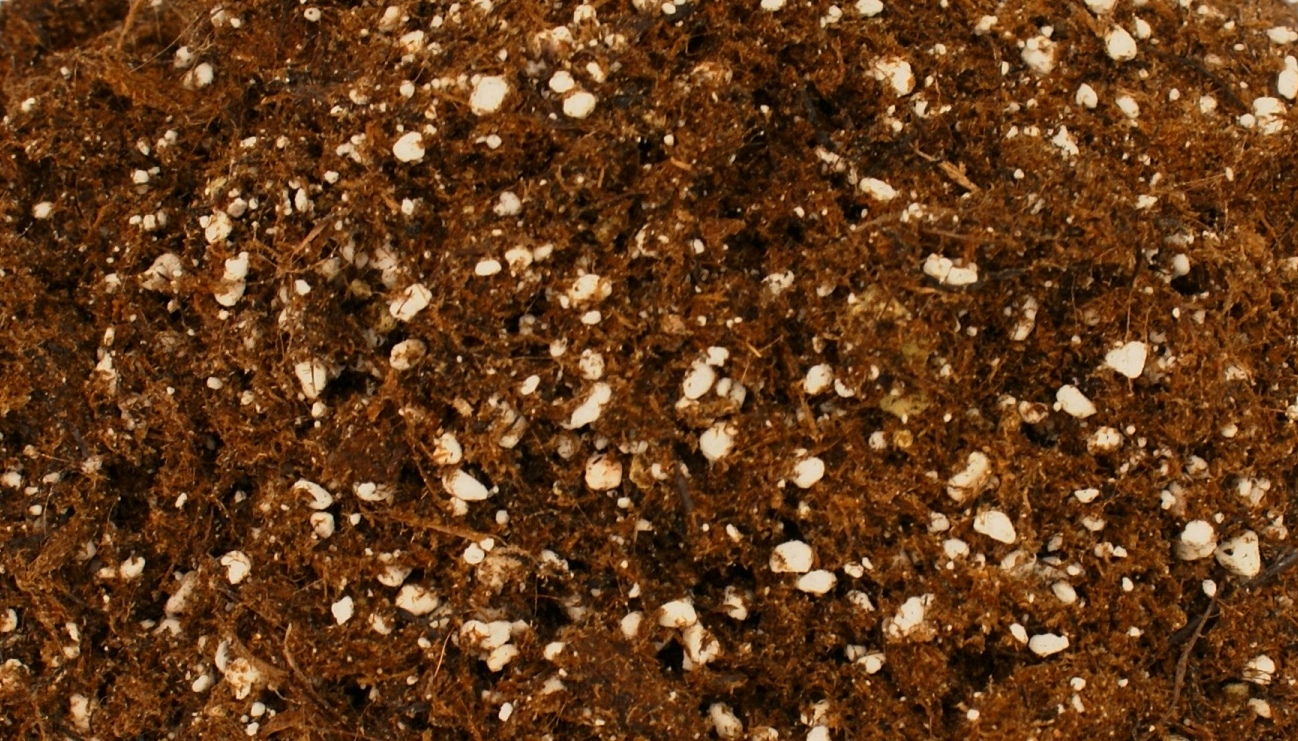Various
At Planet Desert, we offer the largest and most diverse selection of cacti from around the world. Here, you can find a large spectrum of possibilities, from simple and easy to grow cacti to the rarest, unusual, and hard to find collector specimens.
- SIGN UP FOR THE CACTUS EMAIL! Be The First To Find Out About Exclusives, In-Store Events, Contests, and more! CACTUS NOW HAS AN APP & DIGITAL DOWNLOADS!!
- Peanut cactus is a low-growing, cylindrical cactus that reaches about 1 foot in height. Its vase-shaped blooms appear in the spring through early summer. Peanut cactus prefers shallow containers and grows well in rock gardens and xeriscapes. Offsets (pups) drop off and are easy to propagate. USDA Growing Zones: 10 to 11; Color Varieties: Bright red.
- Nopal cactus is considered most safe when eaten as a food instead of a supplement; this has the fewest side effects. While supplements are considered to be possibly safe, more evidence is needed.
Cactus Plant Features
Looking for a plant you don't have to water much? A cactus might be your answer! Most cacti come from dryland areas and are used to being able to survive weeks without rainfall. Cactus houseplants have that same characteristic: Just give cacti a bright, sunny spot and you can enjoy the easy-care houseplants without a lot of tending.
There's a wide variety of cacti to grow; they offer a plethora of shapes, colors, and sizes so you can find one that suits your personality and decor style. If they get enough light, many will bloom, producing cheery flowers in white, pink, red, orange, yellow, or purple. Some of the more common groups of cacti include Cereus, Echinocactus, Espostoa, Ferocactus, Mammillaria, Notocactus, Opuntia, Parodia, Pilosocereus, and Rebutia.
Make the most of your cactus houseplants by planting them in containers that accent the plants' rich colors, shapes, or textures. And by grouping several different cacti together in a windowsill or tabletop, you can create a mini desert escape! In addition to being good houseplants, most cacti are also good plants for offices as they don't need natural light. Lots of artificial light is just fine!
Cactus Questions?
Just drop our experts an email and someone will get back to you! And we bet you'll love our email newsletter -- it's packed full with tips for growing and decorating with plants like cactus indoors and out.
Download our free guide on growing -- and decorating with -- cacti and succulents!
Want to Buy Costa Farms Cactus?
Look for our plants at your favorite local retailer or online!
Cactus Growing Instructions
The best place for most cactus houseplants is a warm, bright spot. These sun-lovers do best when they get lots of direct light.
Wondering how much to water cacti? In general, you can water most types once every two or three weeks or so. If in doubt, it's usually best to water too little; cacti can rot if they stay too moist.
Most cactus houseplants are slow growers and don't really need much fertilizer. Just a couple of times per year will do. But if you want to fertilize your cactus regularly, do so in spring and summer with a general-purpose fertilizer formulated for use on houseplants. Follow the directions on the packaging.
Because they're slow growers, you typically don't have to worry about pruning cacti.
Note: Many cacti are prickly to the touch and are not intended for human or animal consumption.
Get tips for planting cacti (and succulents)!
Discover 10 water-wise plants anyone can grow.
Special Care
Outdoors, grow cacti in containers on a sunny deck, patio, or balcony. They thrive in heat and require containers that have drainage holes.
If cacti are hardy for your landscape, choose a well-drained spot, such as the top of a sunny slope or a rock garden. Don't plant cacti where they'll stay wet for extended periods.
Light
Indoors: High light
Outside: SunColors
Blue, Green, Orange, Pink, Purple, Red, Silver, Variegated, White, Yellow
Water
Low water needs
Special Features
Super-easy to grow
Complement your Cactus with these varieties:
Crested euphorbia makes for an elegant accent to most types of cactus.
Easy-to-grow rosary vine likes similar conditions to houseplant cactus varieties and trails from baskets of cacti.
Most succulents look and grow fantastically well with cactus.
Varieties: Our Favorites
Balloon CactusParodia magnifica
A cactus must be cool if its botanical name contains magnifica! Balloon cactus doesn't disappoint; this globe-shaped plant has parallel rows of spines running down its sides, giving it fun architecture. It also has yellow flowers. It may grow as much as 12 inches tall (30 cm) in time.
Blue Barrel CactusFerocactus glaucescens
Blue barrel cactus is a silvery-blue cactus decorated with golden-yellow spines. When happy, it produces light yellow flowers in spring or summer. Over time, it can grow 24 inches (60 cm) tall and wide. You may also see it called Echinocactus glaucescens.
Candelabra CactusEuphorbia lactea compacta
While it looks like a cactus, candelabra cactus is actually more closely related to poinsettias! It has upright, variegated stems and creates a dramatic look. In time, it can grow 60 inches (150 cm) tall or more.
Christmas Tree CactusOpuntia subulata monstrose
Christmas tree cactus is an unusual, upright-growing variety that has thick, branched pads that almost give it a Christmas-tree look. Over time, it can grow 24 inches (60 cm) tall. Note: It's also called Austrocylindropuntia subulata.
CleistocactusCleistocactus icosagonus
Cleistocactus is a lovely variety covered in golden spines that practically glow in the sun. It grows tall and upright and has orange-red flowers when it's happy. It can reach 24 inches (60 cm) tall.
Copper King Ladyfinger CactusMammillaria elongata ‘Copper King’
This attractive variety of ladyfinger cactus is green but features contrasting coppery-red spines in clusters. It blooms with small white flowers in high-light spots. Copper King ladyfinger cactus usually grows about 4 to 6 inches tall.
Crown CactusRebutia marsoneri
Crown cactus is slow growing and forms tidy mounds about as wide as it is tall (to 6 inches or 15 cm). Over time, it forms offshoots and grows into a cluster. It produces large, orange-red flowers in spring. Note: It's also sometimes called Rebutia krainziana.
Desert Gem CactusOpuntia rufida 'Desert Gem'
This type of prickly pear cactus has cute little pads decorated with bursts of little spines and orange flowers. It usually stays about 12 inches tall or less.
EriosyceEriosyce senilis
Eriosyce is a fun cactus with twisting, hair-like spines and pink flowers. It can grow 8 inches tall. Note: This cactus is sometimes also called Neoporteria nidus.
Fairy Castle CactusAcanthocereus tetragonus 'Fairy Castle'
This small, slow-growing variety has dark green stems studded with white spines. In time, and in ideal growing conditions, it can reach about 36 inches tall.
Feather CactusMammillaria plumosa
Feather cactus stands apart because it’s practically covered in white, feathery spines, giving it a soft, almost cloud-like look. In strong light, it blooms with small, fragrant white flowers. For best results, when watering keep moisture off of the spines. It grows about 4 inches tall.
Golden Ball CactusParodia leninghausii
Also called Notocactus leninghausii, this easy-to-grow cactus features an upright shape and golden-yellow spines. It can reach 24 inches tall or more. In spring or summer, it produces yellow flowers. Zones 10-11
Golden Barrel CactusEchinocactus grusonii
One of the most recognizable cacti, this slow grower has a round shape and is decorated by stiff, golden-yellow spines. It can grow more than 36 inches tall and wide in time.
Golden Pincushion CactusMammillaria muehlenpfordtii
A slow-growing round plant, golden pincushion cactus has attractive golden-yellow spines. It typically grows about 6 inches tall and wide. Note: You may also see it called Mammillaria celsiana.
Grafted CactusVarious species
Looking for a colorful cactus? Try grafted varieties. These are actually two different plants fused together. Grafted cacti come in a range of different colors and sizes.
Ladyfinger CactusMammillaria elongata
Ladyfinger cactus has finger-like stems covered in pretty, golden-yellow, star-shaped spines. When it blooms, it has little creamy-white flowers. It usually grows 4 to 6 inches tall.
Lemon Ball CactusParodia mammulosa
Lemon ball cactus (also called Notocactus mammulosa) is a small and easy-to-grow species that usually gets about 4 inches tall and is covered in needle-like spines. When it blooms it produces yellowish flowers.
Lemon Ladyfinger CactusMammillaria elongata ‘Lemon’
Lemon ladyfinger cactus offers dainty stems decorated by clusters of lemon-yellow spines. In bloom, it produces small, creamy-white flowers. It commonly grows 4 to 6 inches tall with time.
Little Nipple CactusMammillaria heyderi
Little nipple cactus is native to the American Southwest and creates a low mound to 6 inches (15 cm) tall. It bears white, cream, or yellow flowers in summer when grown in high light.
Mammillaria backebergiana albispinaMammillaria backebergiana albispina
Native to Mexico, this slow-growing variety features white spines that give it an airy look. When grown in bright light, it shows off reddish-purple flowers. It can eventually grow 12 inches tall.
Mammillaria backebergiana ernestiiMammillaria backebergiana ernestii
A dark green cactus with spines in small clusters, it’s easy to grow indoors in a bright spot. It blooms with small, reddish-purple blooms. It can reach 12 inches tall. Note: It’s also sold as Mammillaria ernestii.
Cactus For Tacos
Mammillaria booliiMammillaria boolii
Native to Mexico, Mammillaria boolii is a slow-growing cactus covered in white spines, almost making it look like it’s encased in shimmery cobwebs. It produces large pink flowers in bright light.
Mammillaria fraileanaMammillaria fraileana
Mammillaria fraileana is a slow-growing cactus that eventually forms a colony of plants covered in small brown spines. It typically grows to about 6 inches (15 cm) tall and bears soft pink flowers.
Mammillaria guelzowianaMammillaria guelzowiana
Mammillaria guelzowiana is a fun globe-shaped cactus that's covered in spines and blooms with attractive, fragrant bright pink flowers.
Mammillaria matudaeMammillaria matudae
Also called Mammillaria compacticaulis, this slow-growing cactus from Mexico that’s dark green with golden-yellow spines. As it matures, it takes on an upright form and produces a small colony of offsets. The flowers are bright pink.
Mammillaria mystaxMammillaria mystax
Mammillaria mystax is a common, and charming, globe-shaped cactus that blooms with small pink flowers.
Mammillaria rekoi leptacanthaMammillaria rekoi leptacantha
Easy to cultivate and slow growing, Mammillaria rekoi leptacantha gets about 6 inches (15 cm) tall and has spines in clusters. It blooms with pinkish-purple flowers.
Maverick CactusOpuntia 'Maverick'
Maverick is a showy variety that offers variegated pads. It's a slow-growing cactus that can eventually reach a couple of feet tall.
Mexican Fencepost CactusLemaireocereus marginatus
Tall and beautiful, Mexican fencepost cactus gets its name from its vertical growth. The dark green stems are decorated with silvery spines running down the side of the plant in straight lines.
Mother of Hundreds CactusMammillaria compressa
Called mother of hundreds because it forms large clumps (up to 3 feet wide when grown outdoors in a frost-free place), it’s also a fine houseplant. In good light, it produces reddish-pink flowers in winter.
Old Man CactusEspostoa melanostele
Old man cactus is a tall variety that looks like it's covered in soft white hair. When it blooms, it has orchid-like white flowers.
 Old Man of Peru Cactus
Old Man of Peru CactusEspostoa lanata
Old man of Peru cactus earned its name from its long spines that look like the plant has a bushy white beard. It's an upright grower that has red flowers.
Old Man of the Mountain CactusOreocereus trollii
Old man of the mountain cactus earned its common name because its upright growing stems appear to be wrapped in flowing white hair.
Opuntia microdasys var. rufidaOpuntia microdasys var. rufida
Opuntia microdasys var. rufida is a type of prickly pear cactus that has flat pads studded with spines and yellow flowers.
 Owl-Eye Cactus
Owl-Eye CactusMammillaria parkinsonii
Owl-eye cactus is a charming mounding variety that has white spines, densely clustered at the top of the plant, and creamy-yellow flowers.
Parodia aureispinaParodia aureispina
Parodia aureispina is a small, rounded variety that has small white and large, yellow hook-shaped spines with yellow flowers.
Parodia haselbergii subs. graessneriParodia haselbergii subs. graessneri
Parodia haselbergii subs. graessneri, also called Notocactus graessneri flaviflorus, is a relatively fast-growing cactus that features yellowish spines and green flowers in spring. It can grow to 6 inches tall.
Parodia nivosa
Parodia nivosa
Parodia nivosa is a small cactus with long white spines and bright red-orange flowers.
Pilocereus repandusPilocereus repandus
Pilocereus repandus is a tall, upright cactus that grows to tree-like proportions outdoors in the tropics. It has white flowers and showy red fruit.
Pilosocereus lanuginosusPilosocereus lanuginosus
Tall and upright, Pilosocereus lanuginosus has creamy flowers and abundant coppery-yellow spines. Zones 10-11
Pincushion CactusMammilaria pringlei
Pincushion cactus is an excellent houseplant that has a mounding shape, golden-yellow spines, and pink flowers.
Pineapple CactusMammillaria longimamma

Pineapple cactus is a low-growing variety that has branching stems topped by star-shaped spines. It has creamy-yellow flowers.
Powderpuff CactusMammillaria bocasana
Powderpuff cactus earned its common name because of the silky hairs that surround its spines. It can bear yellow or pink flowers in spring or summer if it gets enough light.
Rainbow Pincushion CactusMammillaria rhodantha
Cactus For Macbook Pro
Rainbow pincushion cactus is an easy-to-grow species that slowly reaches 6 to 12 inches tall (15 to 30 cm) and 4 inches (10 cm) wide. It features clusters of curved spines and pinkish flowers from spring to fall in high-light spots.
Red African Milk TreeEuphorbia trigona Red
You wouldn't guess red African milk tree is actually related to poinsettias! This succulent has upright stems flushed with red and silver. Zone 10
Red Tom Thumb CactusParodia mairanana
Red Tom Thumb cactus is a small cactus that usually grows wider than tall. The dark green body bears star-like clusters of small spines. When happy, it produces orange or red flowers in spring and summer.
Red Torch CactusEchinopsis huascha
Red torch cactus is an attractive, upright species that features a green body accented by star-like clusters of spines. Over time and in optimal good conditions, it can reach 5 feet tall (1.6 m).
Red-Headed Irishman CactusMammillaria spinosissima
Red-headed Irishman cactus earned its name because the new spines at the top of the plant are a rich, coppery-red color. As they mature, the spines fade to silvery white. This globe-shaped cactus has pink flowers.
Rosy Pincushion CactusMammillaria zeilmanniana
Rosy pincushion cactus earned its common name for its attractive pink flowers that can appear on and off throughout the year. It grows about 5 inches (12 cm) tall and 3 inches (8 cm) wide.
Schlosser CactusParodia erubescens
Schlosser cactus is a spherical variety that has showy coppery-spines and lemon-yellow flowers. It can grow 8 inches tall and 6 inches wide. Note: This cactus is also called Notocactus schlosseri.
Silver Arrow CactusMammillaria karwinskiana nejapensis
Silver arrow cactus is a slow-growing, dark green cactus that bears long, silvery-white spines and small, silvery-white hairs. It has white flowers.
Silver Ball CactusNotocactus scopa
A globe-shaped species, Notocactus scopa has yellow-orange spines and ivory-yellow flowers. It can eventually reach 20 inches tall. Note: It's also sometimes called Parodia scopa.
South American Pincushion CactusMammillaria columbiana rubra
Cactus For Containers
South American pincushion cactus typically grows taller than it is wide, and has coppery-red spines in clusters. In high light, it produces small pink flowers.
Tenango de Valle CactusMammillaria duoformis Tenango de Valle
Tenango de Valle cactus is a slow-growing variety that produces clusters of creamy-yellow spines accented by hooked, reddish-purple spines. It grows 4 inches (10 cm) tall.
Turk's Cap CactusMelocactus matanzanus
Turk's cap cactus is a small, slow grower that's topped by coppery-colored spines and pink flowers. Native to areas of Cuba, it's endangered in the wild. It grows 4 inches (9 cm) tall and wide.
Twin-Spine CactusCactus For Macrame
Mammillaria geminispina
Twin-spine cactus is a rounded, mounding variety that has silvery-white spines and cute pink flowers. It can grow about 8 inches (18 cm) tall over time.
Woolly Nipple CactusMammillaria nivosa
Cactus For Credentialing
A charming Caribbean plant that eventually forms fun clusters of offsets, woolly nipple cactus shows off clusters of golden-yellow or bronze spines and fuzzy-white hairs. It bears small yellowish-green flowers. It can grow 6 inches (15 cm) wide.
